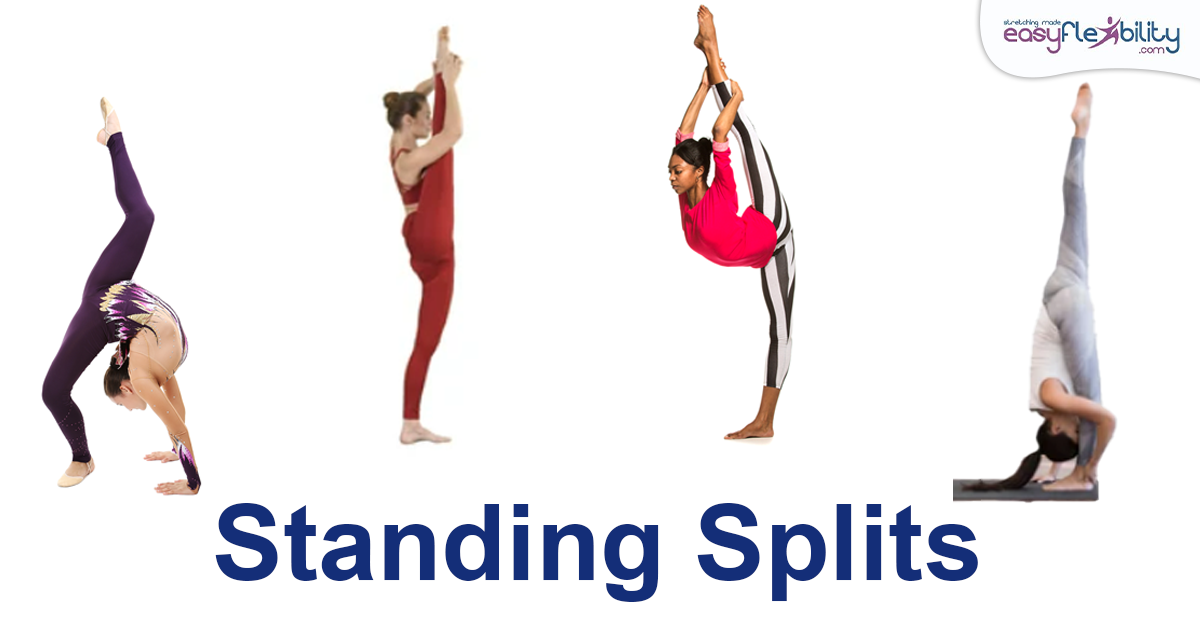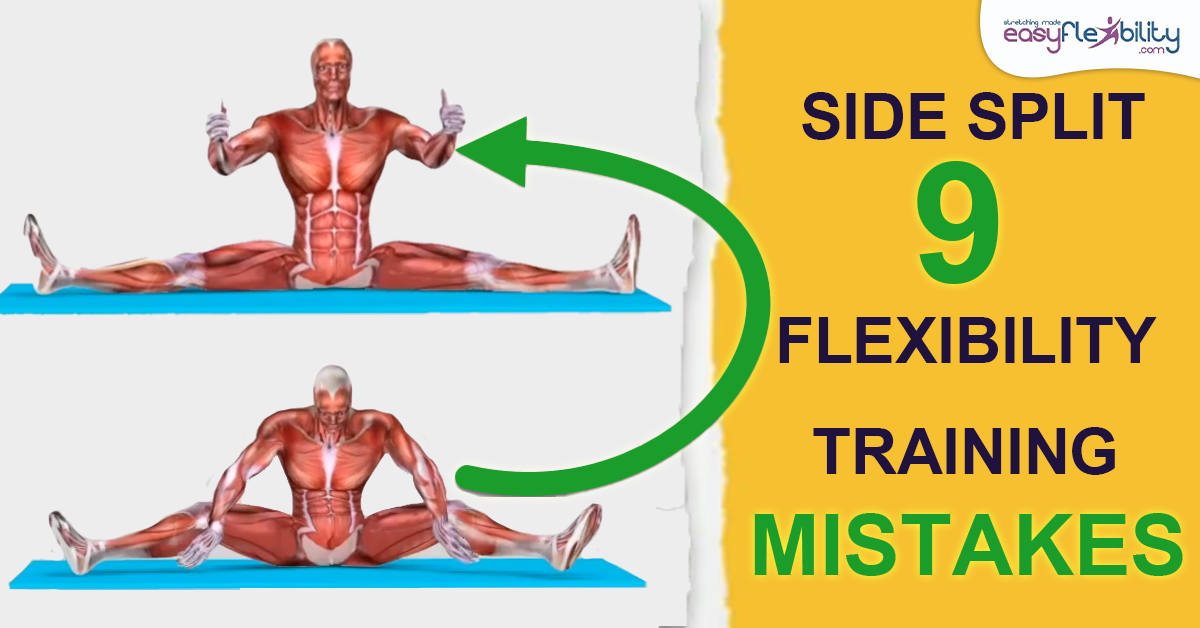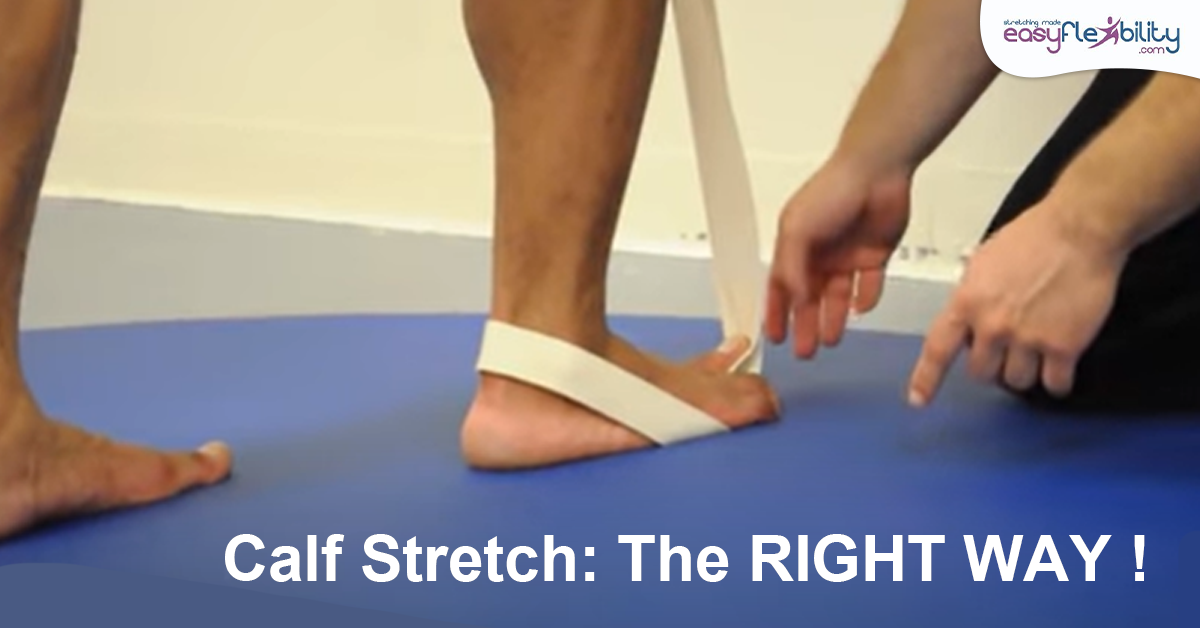A Triangle of Hiking and Backpacking Injuries
Posted by Paul Zaichik on
The Triangle of Hiking and Backpacking Injuries
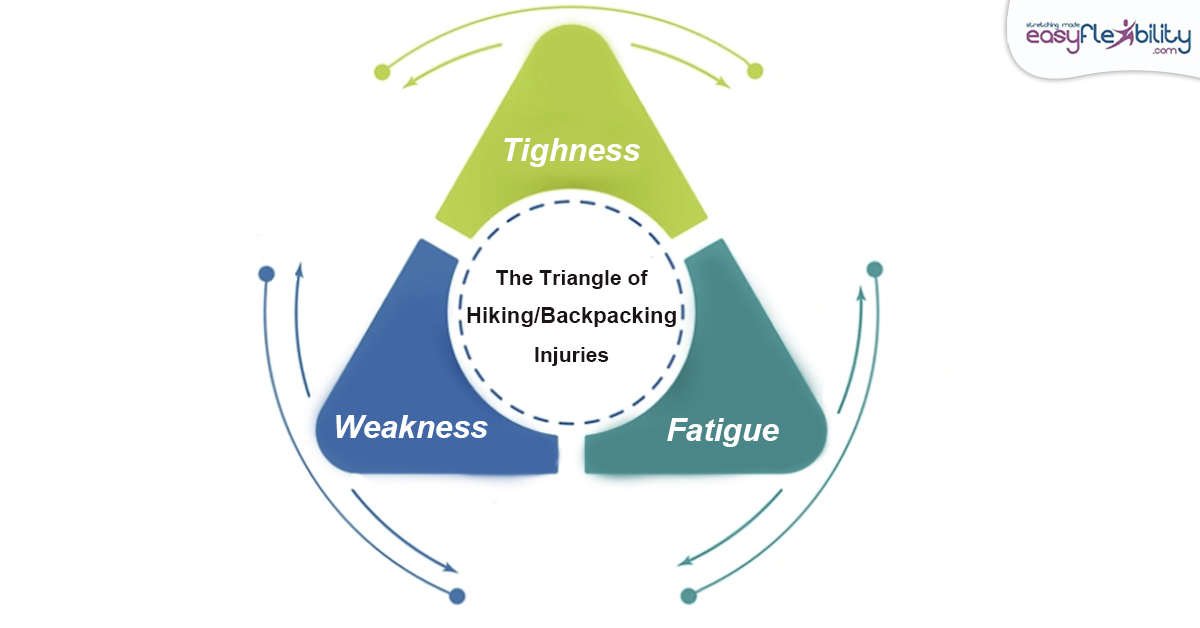
My first introduction into science of hiking or backpacking came from one of my professors when I was in college.
My first introduction into science of hiking or backpacking came from one of my professors when I was in college. He was an avid hiker. Anytime he needed to make an example he would use hiking as an example: Hiking techniques, Hiking Biomechanics, Hiking Physiology, Hiking Kinesiology. He has even invited the students to some on his hiking and backpacking adventures. Fortunately, I made a decision to go because I have learnt a lot.
Now, let's talk about the Triangle of Hiking and Backpacking Injuries
In this article, I would like to talk about the triangle of hiking and backpacking injuries. The triangle has three interconnected points:
- The tightness
- The weakness
- The fatigue
Assuming that you have the correct technique, you have the right gear, you are properly nourished and in the right mindset. We take a look at three interconnected factors. Any one of them will affect the other two. And any one of them, and of course, all three of them together is a major cause of non accidental type of injuries.
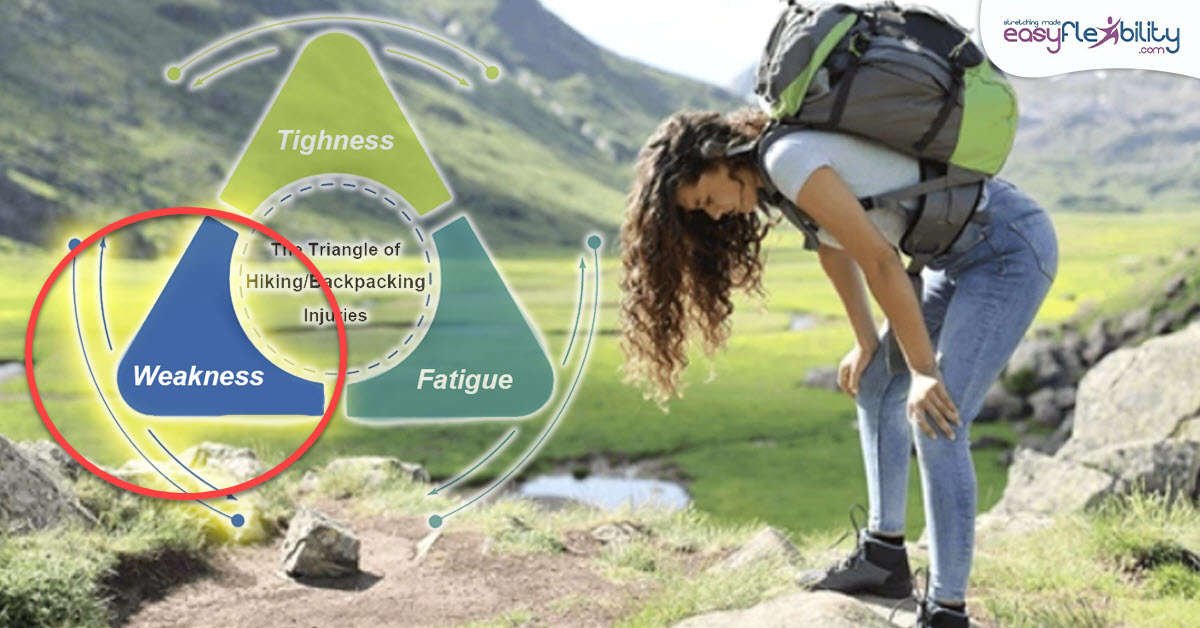
Weakness
First one is weakness. Weakness does not mean that you're not able to lift your arm or your leg. It means muscles are weak in specific ranges. For example, if you're going up the mountains, you are going up the hill. Your plantar flexors might be strong as you walk on a flat surface, but as you walk up the hill, they may not have the strength in that range if they were never strengthened in that range.
If your muscles are not strong they are going to get tired a lot faster than the muscles that are strong. And of course, the muscles are going to start stiffening up. And there is your connection from weakness to tightness and weakness to fatigue.
Once your muscles, either due to any one of these three factors are not able to properly apply force. Your body will hang on the ligaments. That is the term we use. Meaning? The strength of your ligament is what's going to hold the joint in place. And while ligaments can hold joints in place, they are also quite prone to injury if the joint is not protected by the muscles.
If your muscles are not strong they are going to get tired a lot faster than the muscles that are strong. And of course, the muscles are going to start stiffening up. And there is your connection from weakness to tightness and weakness to fatigue.
Once your muscles, either due to any one of these three factors are not able to properly apply force. Your body will hang on the ligaments. That is the term we use. Meaning? The strength of your ligament is what's going to hold the joint in place. And while ligaments can hold joints in place, they are also quite prone to injury if the joint is not protected by the muscles.
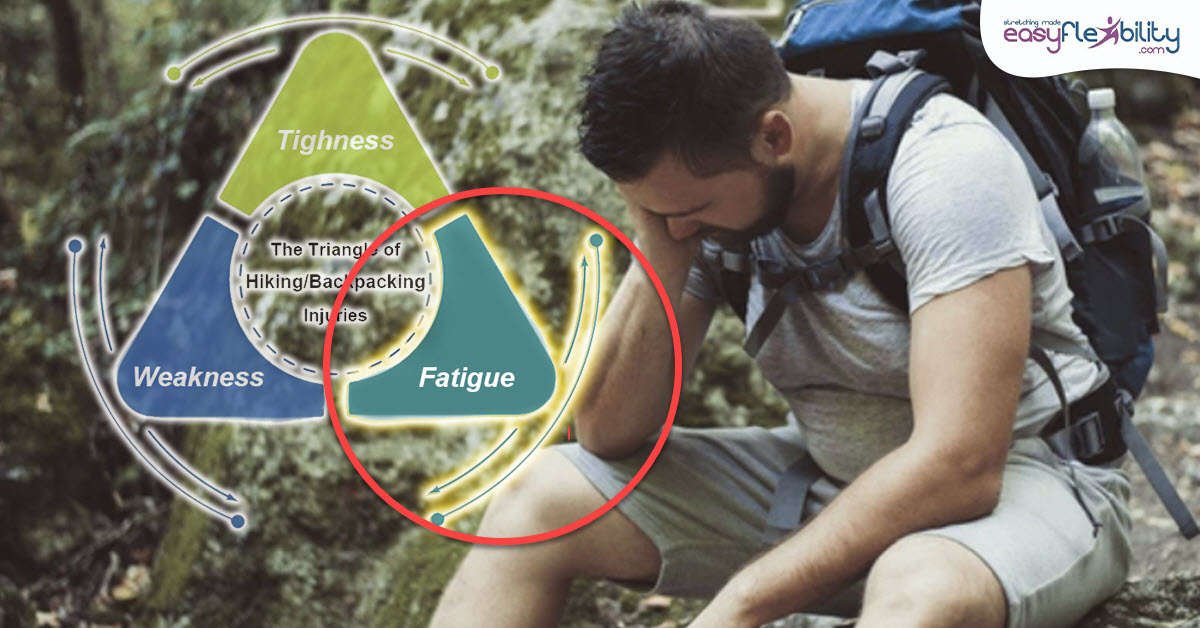
Fatigue
The other point is the fatigue. If you are not well trained endurance wise, eventually strength will go. At the same time if you're not trained endurance wise, stiffness will appear. As you see again. One aspect of this triangle will influence the other.
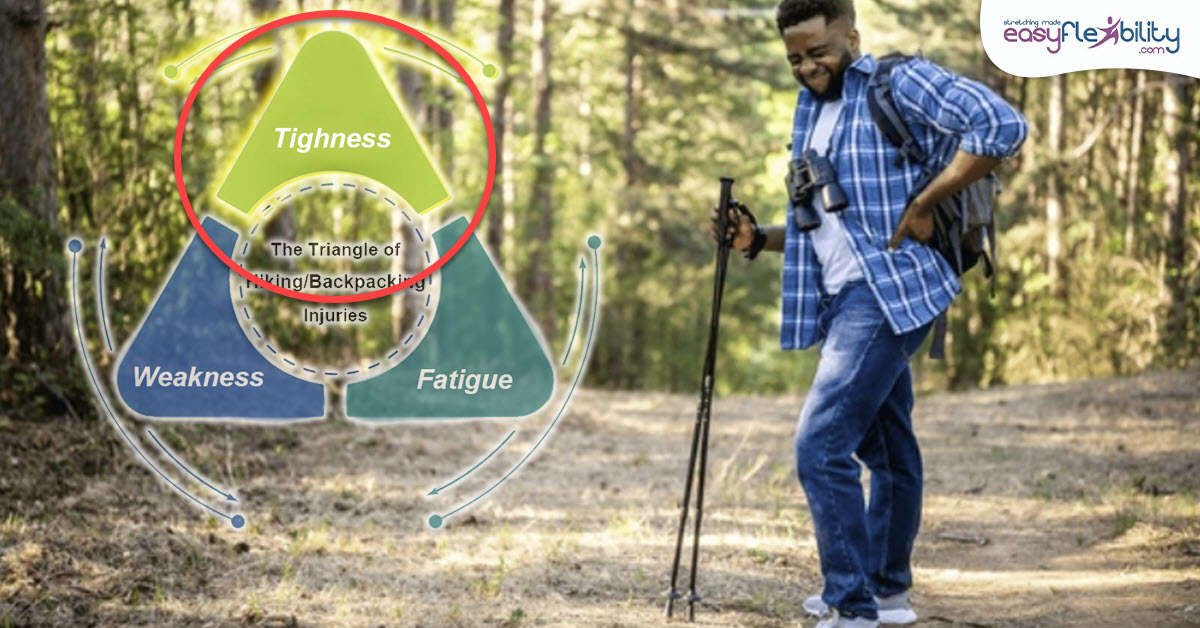
Tightness
And finally, the tightness. While you might be okay walking on flat surface and in the city, once you go on the trail there is a flexibility requirement that you might not even notice, in your foot and ankle joint. Whether it's plantar flexion or dorsiflexion or inversion or eversion.
Flexibility in your glutes and adductors as you lift your legs to step over something or go up on a hill. Flexibility of your hip flexors if you're taking long strides. And also possible flexibility of your abductors or the muscles on the outside of your hip if you have to walk on a very narrow pass with one leg in front of the other.
And tightness can cause weakness very quickly because when you are tight your muscles use a lot more energy. Causing eventual weakness and of course, causing the fatigue.
Flexibility in your glutes and adductors as you lift your legs to step over something or go up on a hill. Flexibility of your hip flexors if you're taking long strides. And also possible flexibility of your abductors or the muscles on the outside of your hip if you have to walk on a very narrow pass with one leg in front of the other.
And tightness can cause weakness very quickly because when you are tight your muscles use a lot more energy. Causing eventual weakness and of course, causing the fatigue.
Compensation
You can compensate with any of these three for having lack of the other ability:
- A flexible person can compensate slightly for the weakness and fatigue.
- A person who had a lot of endurance, can compensate somewhat for weakness and tightness.
- And a person who is very strong can compensate somewhat for the tightness and the fatigue.
But eventually, if one of these aspects is not there, they will influence the other two.
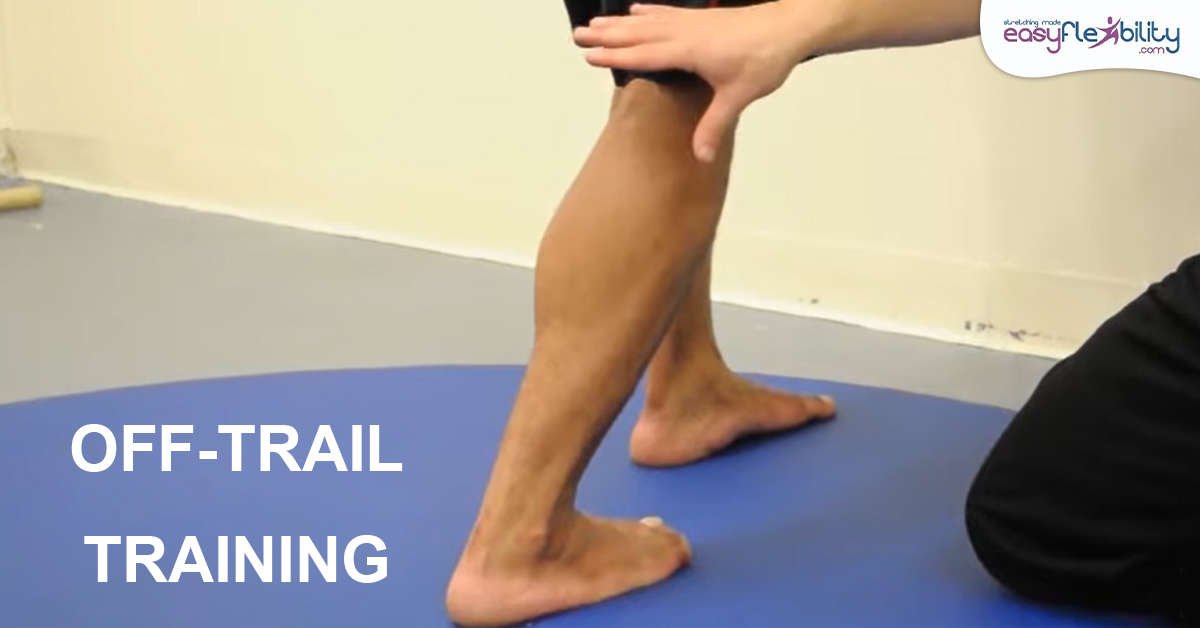
Training off the trail
I first saw the importance of training off the trail when I went on my first hike with some of my classmates, my professor and some of his buddies. I was in my 20's and he was in his 60's and he moved very well with certainty. When a lot of us, 40 years younger than him, began to feel it, he he didn't.
He liked to say that whenever he can, he hikes. And when he cannot hike, he trains for hiking or prepares for hiking. So at home he did off trail training. Training for his endurance, strength and flexibility. As you can imagine strength training is usually neglected by a lot of hikers less now than years ago, but still. And flexibility is the most neglected part of the three.
He liked to say that whenever he can, he hikes. And when he cannot hike, he trains for hiking or prepares for hiking. So at home he did off trail training. Training for his endurance, strength and flexibility. As you can imagine strength training is usually neglected by a lot of hikers less now than years ago, but still. And flexibility is the most neglected part of the three.
What can you do for your off trail training?
If you do off trail training at home, this should be done 2 to 3 times a week. From my hiking experience, I recommend a general hiking/backpacking program. And a specific program for your needs. Specific program for your needs is the one that addresses your most prone to injury areas. Some people are most prone to ankle problems, some to knees, some to hips, some to lower back.
Unfortunately, some people are prone to injuring more than one area, and if you have already been hiking for a while, you know what your areas are. And it's recommended that you do this off trail training 2 or 3 times a week. Investing your time into off trail training is going to help you to enjoy the hike a lot more, where you're not thinking about potential injury and just enjoying the journey.
Unfortunately, some people are prone to injuring more than one area, and if you have already been hiking for a while, you know what your areas are. And it's recommended that you do this off trail training 2 or 3 times a week. Investing your time into off trail training is going to help you to enjoy the hike a lot more, where you're not thinking about potential injury and just enjoying the journey.

Elevate Your Hiking Experience with Our Unique Strength and Flexibility Training Program
Unlock the full potential of your hiking adventures with a training program unlike any other. Our secret? The revolutionary Zaichik Stretching Techniques combined with kinesiology-based exercises tailored specifically for hikers. While traditional stretching methods may slow you down, our approach enhances flexibility quickly and effectively, preparing your body for the trail ahead.
Why Flexibility Matters for Hikers:
You might wonder, "Why do I need to be flexible if I'm not a gymnast or ballet dancer?" The answer is simple. Hiking involves navigating uneven terrain, requiring your feet, ankles, knees, and hips to move beyond their usual range of motion. Increased flexibility means better protection for your muscles and joints, reduced fatigue, and a lower risk of injuries.
Our program goes beyond generic exercises. After realizing that traditional flexibility training wasn't enough, we developed hike-specific exercises that dramatically improved our hiking experiences. Whether it's enduring long treks or conquering challenging paths, our program prepares you for it all, focusing on the areas most crucial for hikers.
Join us and transform your hikes into enjoyable, injury-free adventures. Our specialized program is designed to help you explore the great outdoors with confidence, strength, and unparalleled flexibility. Start your journey to a better hiking experience today.
Why Flexibility Matters for Hikers:
You might wonder, "Why do I need to be flexible if I'm not a gymnast or ballet dancer?" The answer is simple. Hiking involves navigating uneven terrain, requiring your feet, ankles, knees, and hips to move beyond their usual range of motion. Increased flexibility means better protection for your muscles and joints, reduced fatigue, and a lower risk of injuries.
Our program goes beyond generic exercises. After realizing that traditional flexibility training wasn't enough, we developed hike-specific exercises that dramatically improved our hiking experiences. Whether it's enduring long treks or conquering challenging paths, our program prepares you for it all, focusing on the areas most crucial for hikers.
Join us and transform your hikes into enjoyable, injury-free adventures. Our specialized program is designed to help you explore the great outdoors with confidence, strength, and unparalleled flexibility. Start your journey to a better hiking experience today.
We also recommend the following programs:

BACK PAIN MANAGEMENT PROGRAM
How to GET RID of BACK PAIN in less than 15 MINUTES a day!
In this training online course you will learn a series of easy exercises in a
progressive program designed to eliminate or reduce back pain and prevent
future problems!
progressive program designed to eliminate or reduce back pain and prevent
future problems!

GLUTES & ILIOTIBIAL BAND STRENGTH & FLEXIBILITY PROGRAM
This Glutes & Iliotibial Band Program takes apart the gluteal complex so that you can stretch the muscles that are tight in your body unlocking the constriction pattern specific to you and your needs.
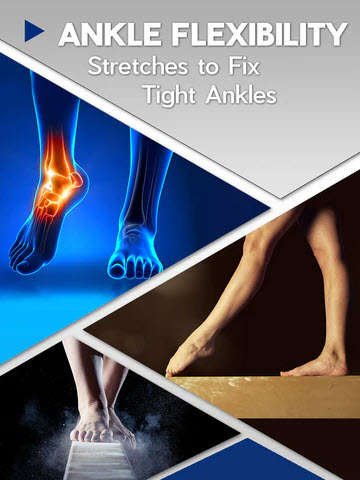
FOOT & ANKLE
STRENGTH & FLEXIBILITY
PROGRAM
STRENGTH & FLEXIBILITY
PROGRAM
Elevate your athletic performance with our Foot and Ankle Strength and Flexibility program! Utilizing the unique Zaichik Stretching method, we target individual muscles for optimal mobility without the pain of traditional stretching. This program combines flexibility gains with strength exercises to protect your joints and ensure lasting results. Witness immediate improvements from your first session. Transform your movement and agility today!

LOWER BODY SELF PRESSURE MASSAGE PROGRAM
Our program gives a complete follow along routine to release every muscle in the lower body. This ensures full stretching capacity and decrease chance of injury due to overcompensation of one muscle group for another.
Share this post
0 comment

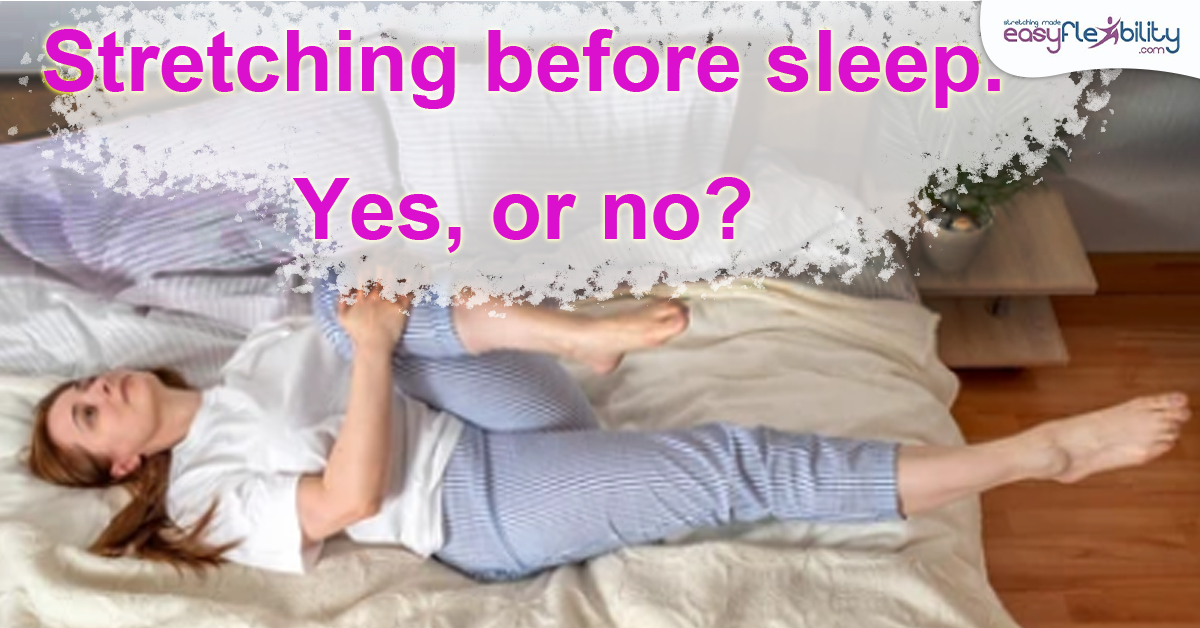
![Flexibility Training Program: Is it most beneficial standalone or with other fitness activities? [Case Study]](http://www.easyflexibility.com/cdn/shop/articles/336650424_545202031087374_5213276437981439590_n.png?v=1679586503)
